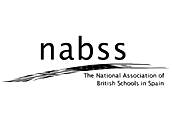What is STEAM education
What is STEAM education and how is it applied at school?
What is STEAM education? This learning method is based on 4 basic principles, related to problem solving.
At Sevilla private school we apply methods based on the principles of science, also creating an academic environment in which students can develop independently, but at the same time with the collaboration of their classmates. The STEAM model allows us to integrate robotics or basic programming classes into the education of our students, with the aim of teaching them to solve problems based on methods that they can apply in their daily lives.
What is STEAM education
STEAM stands for Science, Technology, Engineering and Maths, four interdependent disciplines, which base their application on problem solving.
A student who follows a STEAM learning model will consider hypotheses and seek answers, based on methods applicable to different areas of learning. The result is the continuous use of a logical-mathematical method, which allows the creation of valid structures for adult life.
The application of the STEAM method must be encouraged by a flexible and creative environment, without closed answers and committed to the capacity of each student. Daily reasoning is what we really achieve, through the practical application of this academic method.
Los principios de STEAM educación en el aula
- The principles of STEAM education in the classroom
Boys and girls should actively participate in science-related tasks. Ideas such as gardening, a terrarium, building a world map or creating a science club will allow them to experience first-hand the practical application of science. - Teachers must be willing to adapt classes to the conditions of the students. STEAM is a flexible educational model, which transforms the abilities of each child in a different way.
- It is important to establish a series of evaluation methods that are not based on a simple number or grade at the end of the course. In the evaluation methodology, the student’s evolution must be implicitly included.
- Every learning process needs a theoretical basis, but it is important to move from theory to practice, based on activities related to science and technology.
- Maintaining student interest in the application of science subjects is important. The application of digital environments, which can range from the use of tablets to the development of robotic devices, is an appropriate solution for students to commit to their own learning process.
- Beyond the specific activities, what we provide to the student are reasoning methods both to solve academic questions and for other areas of their daily life.
- Collaboration between students is also one of the principles of STEAM. Each student has their own environment, in which they can develop individually, however, problem solving is carried out above all in a collaborative way.
- The debate is also one of the bases of this academic process. It is necessary to encourage constructive discussion and the exchange of ideas in general terms.
Los obstáculos que deben superarse en el método STEAM
Uno de los principales obstáculos relacionados con el desarrollo del método STEAM es la necesidad de medios técnicos. Las clases de robótica son un ejemplo de los medios que requiere un centro que realmente quiere implantar STEAM. Este tipo de clases no solo necesita de educadores especializados en estas áreas del conocimiento, además es imprescindible que el alumnado disponga de recursos materiales para desarrollar robots a pequeña escala, que sean totalmente funcionales.
Otro de los obstáculos es la necesidad de criterios de evaluación, que no siempre se adecúan a lo que realmente aprende el alumno o la alumna. Cómo valorar el desarrollo académico de un alumno que aprende en base a un proceso STEAM, sigue siendo uno de los principales problemas que presenta esta técnica.
Al igual que otros métodos pedagógicos actuales, STEAM está en continuo desarrollo, lo cual permite detectar problemas e implantar soluciones, que se adecúan a la situación específica de la clase y del alumnado. El objetivo a corto plazo es superar los obstáculos, para que la educación STEAM pueda implantarse de forma integral, ayudando a alumnos y alumnas a desarrollar capacidades relacionadas con el análisis y la resolución de problemas de manera creativa.
El método STEAM en International School Andalucía
En International School Andalucía desarrollamos nuestro propio proceso educativo basado en los principios STEAM, de hecho contamos con dos salas TIC y un laboratorio STEAM específico, en el que nuestros alumnos y alumnas pueden desarrollar multitud de actividades lectivas relacionadas con las matemáticas, la tecnología, las ciencias y la aplicación de soluciones de ingeniería básica. Los resultados son excepcionales, nuestros alumnos aprenden desde un punto de vista práctico, forman estructuras de análisis creativas y aprenden que la teoría se convierte en práctica en la vida real.








